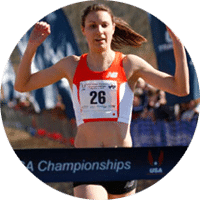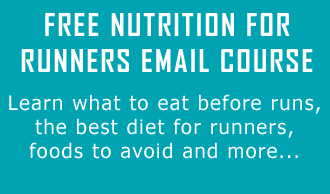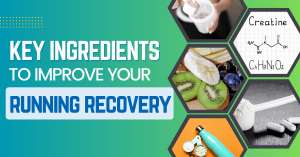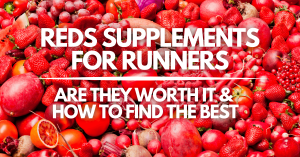If you’re an avid reader of this blog, than you know that carbohydrates are good for runners. They are the most accessible form of both immediate and long lasting fuel for endurance exercise and therefore should make up the greatest amount of a runner’s diet.
We also know that carbohydrates can be classified as simple or complex. Simple carbohydrates, or simple sugars, are found in foods like table sugar, honey, and corn syrup. They are made up of just one or two sugar molecules, hence the term “simple”. These sugars are often incorporated into processed foods like soft drinks (and sports drinks), baked goods, sugary cereals, jams and syrups, and candy. Simple sugars that are natural occurring and also contain vitamins and minerals are found in fruits, vegetables, and milk and milk products.
Complex carbohydrates are formed from long, complex chains of sugar. They are found in starchy foods like vegetables and unripe fruit, potatoes, rice, bread and other starches. Regardless of the complexity of the carbohydrate, they are all eventually converted into glucose to be burned as energy or stored for future use.
The rate or speed at which a carbohydrate is converted into glucose is measured on a scale called the glycemic index. In this article, I am going to explain the glycemic index in more depth and show you how you can use it to maximize your performance on race day, during workouts, and to speed recovery.
The Glycemic Index
The Glycemic Index (GI) was created as a tool to measure how fast a food is digested and how quickly that glucose will enter the bloodstream.
The effect that a carbohydrate has on blood sugar does not depend necessarily on if a carbohydrate is simple or complex; instead it is determined by its glycemic response, or its ability to contribute glucose to the bloodstream.
Foods are ranked based on their measured blood glucose response when compared with a reference food (either glucose or white bread).
Foods that produce a blood glucose response that is close to that of the reference food are categorized as high GI foods. High GI foods include glucose, refined bread, potatoes, breakfast cereals, and sports drinks.
Other foods are then categorized as moderate or low GI depending on how low their glycemic response is in comparison. Moderate GI foods include sucrose, soft drinks, oats, and tropical fruits such as bananas and mangoes.
Low GI foods include fructose, milk, yogurt, lentils, pasta, nuts, and cold climate fruits such as apples and oranges.
Glycemic Index and Performance
Athletes often eat a single food product for a pre-workout snack such as a sports drink, a bagel, or a piece of fruit. Knowing the GI of those foods can help you make the best pre-workout choice based on the conditions.
High GI foods quickly enter the bloodstream to be used for energy so these foods are best eaten during or after exercise. If you have another workout or competition to prepare for later in the day, high GI foods and fluids can enhance the rate of glycogen replenishment to get you ready for the next exercise bout.
Low to moderate GI foods slowly enter the bloodstream and provide more sustained energy, therefore making them ideal before endurance exercise. If you are not able to consume calories and carbohydrates immediately before your run, eating a low GI food hours beforehand may provide you with lasting endurance.
Limitations of the Glycemic Index
The Glycemic Index often causes more confusion than it is worth when trying to apply it to a sports nutrition diet. One reason is that the GI (Glycemic Index) of a food or meal is influenced by a number of factors:
- The food form and amount eaten
- The degree of processing and the way the food is prepared/ cooked
- The fiber content of the food
- The amount of fat added to the food
- The presence of fructose or lactose (both are low GI)
Furthermore, it should be noted that the Glycemic Index is based on a portion size of 50 grams (200 calories) of carbohydrate, which is often not the average serving size of most foods.
Also, the blood glucose response to high GI foods may curbed when low GI foods are consumed in the same meal.
RunnersConnect Bonus
Download your FREE Guide where we share the Best Foods to Eat Before Running.
The guide contains 5 of the most nutritious foods to eat before a run lasting 60 minutes or less and 10 foods that will fuel you through your runs over 60 minutes. Each of these carefully selected pre run foods will help you feel better in your training (while making sure they do not upset your stomach!)….we all know how bad that feels!
Glycemic Load
To correct for these limitations we can consider the glycemic load of a food. The glycemic load is calculated by multiplying the GI (expressed as a decimal) by the carbohydrate content (in grams) of the amount eaten. The following are glycemic load ranges for a single serving of food:
- High: > 20
- Moderate: 11-19
- Low: < 10
Glycemic load can be used to determine the glycemic response of a serving of food, an entire meal, or the complete daily diet.
Final Notes
- The Glycemic Index was initially created as a tool for diabetics who need to be cautious about their blood glucose levels. High blood glucose triggers the body to secrete insulin. Too much insulin can stimulate the appetite as well as fat storage. On the other hand not enough insulin, as is often the case in diabetes, can result in high blood sugar levels and the inability to use that blood sugar for energy or storage. Luckily most active people need less insulin to get the blood sugar into their muscles and thus can better handle high GI foods.
- There is a large variation in individual glycemic responses to food. Furthermore, glycemic response can also vary meal to meal depending on the combination of foods that are eaten. As with all things related to sports nutrition, it is best to experiment and learn which foods and food combinations work best for fueling your workouts and recovery.
- For day to day nutrition, foods with a low GI are the best choices. They are mostly whole grains, fruits, and vegetables that provide fiber along with an array of vitamins and minerals that will help you meet many of your nutritional needs.
The following is a link to a table that provides the glycemic index and glycemic load (based on the stated serving size) for a number of foods: Glycemic Index and Glycemic Load









3 Responses
If you Google “glycemic index online databases” you’ll find useful databases for thousands of foods.
Yep, there are some great resources for the glycemic index of foods. Just keep in mind that the glycemic load is really more important. Ask yourself “would I typically eat 50g of carbohydrate (200 calories) of this food?” A baked potato- maybe. Honey- probably not. So while it can be useful to know the glycemic index of foods, keep it in perspective with the amount of that food you are eating, and also the GI of other foods in your meal.
Thanks for opening this subject. Could you give any guidance on how long it takes for foods to be available as useable fuel for a run? This ties to carbohydrate loading. I read somewhere that the plate of pasta for dinner the evening before an event doesn’t come “on stream” in time, but pasta eaten at lunch the day before does. True? Why to elite runners tank up four hours before an event if the carbs don’t come on stream? Just to avoid hunger? Is this a difference between availability of sugar in the blood as opposed to storage in the liver and muscles? Does goo taken during an event really make a physiological difference? Or just a placebo? How long before excess starches are covered to body fat? Thanks.